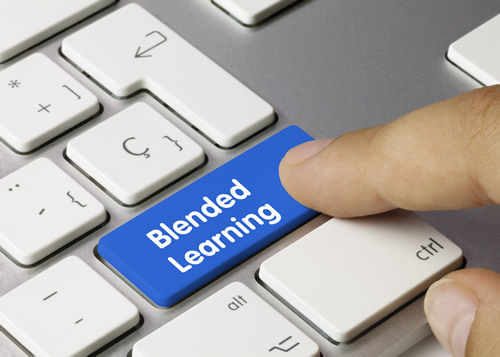During their online learning time students dive into new content by studying texts, watching online videos, and taking assessments that help them develop their basic understanding of course content. They then turn to individual assignments and group discussions that help them develop their analytical, critical thinking skills. While working online, students communicate with Nolt through an online messaging system and through the comment features built into online assignments and discussions that allow him to give feedback on their work.
The blended-learning approach allows students to explore concepts at different depths of understanding, based on their interests. All students are expected to learn the “big idea” for each lesson or unit, but can then choose activities for going deeper on topics that interest them. They then demonstrate their mastery of course concepts through essays, PowerPoint presentations, or other types of assignments.
Using blended learning to strengthen relationships
Stacey Roshan, a high school math teacher in the Washington, DC, area, became a teacher because she wanted to share her love of math with students and help combat the notion of “I’m not a math person.” She wanted her class to be a place where exploring math was fun and where students knew she cared about them as individuals. But for many of her AP Calculus students, it was hard to love math given their nightly struggle through homework assignments with unanswered questions and the enormous pressure to get straight A’s. Meanwhile, back in the classroom, Roshan found there was little time to focus on students’ needs when she was busy trying to ensure that she delivered all the content they needed to tackle their nightly assignments.
To address these challenges, Roshan turned to blended learning. She “flipped” her lessons into online videos for students to watch at home. She then shifted class time toward addressing students’ questions and misunderstandings as they worked through problems, discussing and exploring math concepts conceptually, and engaging with students in a more personal way.
As Roshan explains in her book, Tech with Heart, “It’s important to understand that my flipped classroom is not about videos at home and textbook work in class. It is about easing students’ anxiety by giving them time to work through problems with their peers and with me. It is about personalizing the learning space, building relationships with students and gaining their trust, and being there to support them when they need me the most.”
Making these models work for the fall
Most of the flipped classroom and enriched virtual models that we’ve studied come from the high school level because elementary students are normally at school every day and have relatively little homework. But considering that COVID-19 will likely require all students to learn at least part-time at home, these models are worth consideration for elementary schools as well. Both models offer a blueprint for how teachers can design instruction to meet the constraints—and even opportunities—of students coming to school in shifts to meet distancing requirements.
To learn more about blended-learning models similar to those described above, I recommend exploring the content on the Blended Learning Universe and browsing the blended learning mini-course available at Khan Academy. For those interested in learning the ins and outs of setting up models like these, the Modern Classrooms Project offers some great professional development resources as a starting point.
- Is this the moment in history when K–12 school systems get disrupted? - January 8, 2021
- Blended learning models can help schools reopen–here’s how - December 21, 2020
- 3 things edtech can’t do - April 16, 2019

